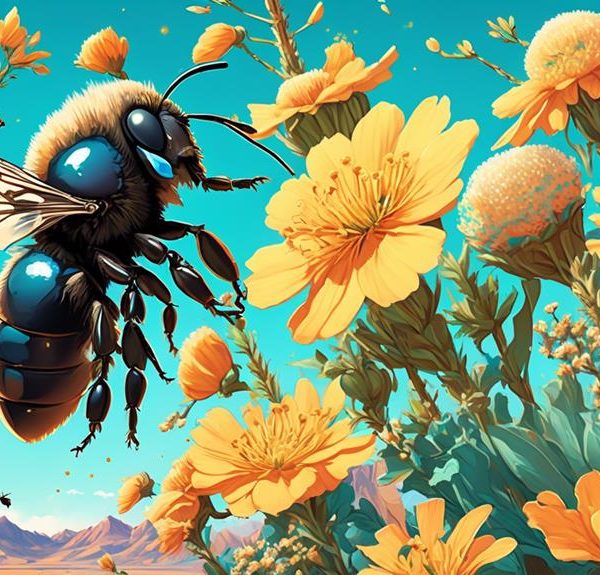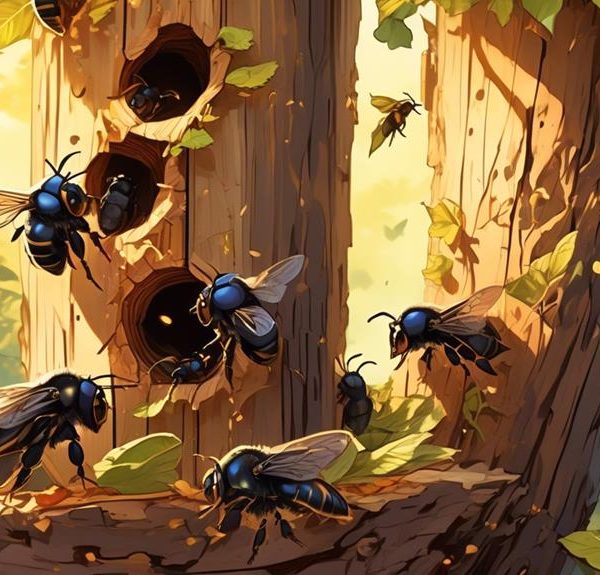Gain intriguing insights into the life expectancy and fascinating world of carpenter bees; a tale of survival, environment, and human interaction awaits.
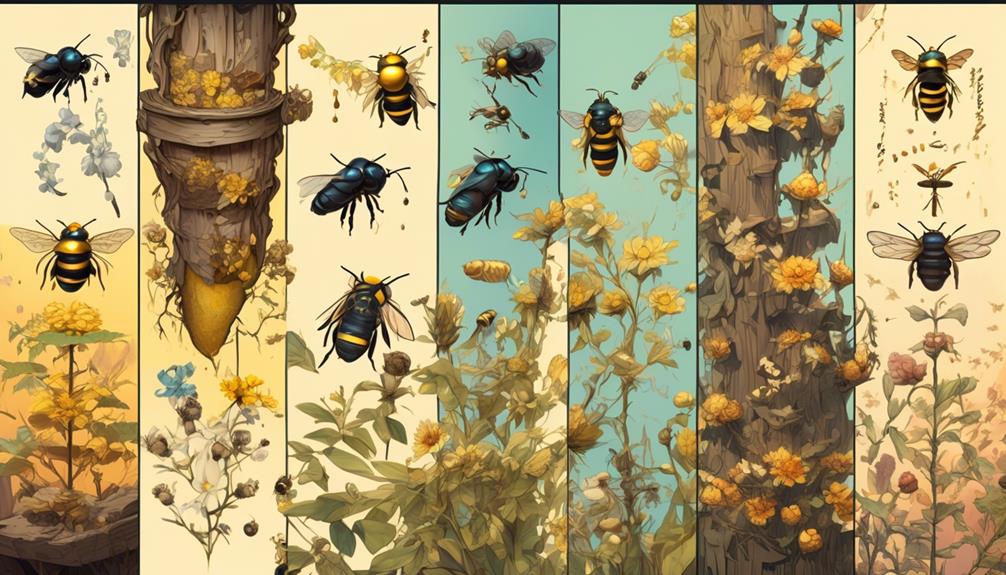
Carpenter Bee Life Expectancy
Imagine you've found a sizable colony of carpenter bees buzzing around your backyard shed. You're curious about how long these industrious insects live.
Well, you're in the right place to understand the life expectancy of carpenter bees. Even though these creatures may seem like mere fleeting visitors in your yard, their lifespan is far more complex than you might believe.
Between environmental factors, predators, and human interactions, there's a multitude of elements that can influence how long these fascinating insects live.
Stick around, and we'll explore the intriguing world of carpenter bee longevity together.
Key Takeaways
- Carpenter bees have a lifespan of up to three years.
- Factors such as predators, parasites, and environmental conditions can affect their longevity.
- Woodpeckers, wasps, flies, spiders, and parasitic insects are threats to carpenter bees.
- Climate, food availability, habitat conditions, and human activities influence their lifespan and survival.
Understanding Carpenter Bee Lifespan
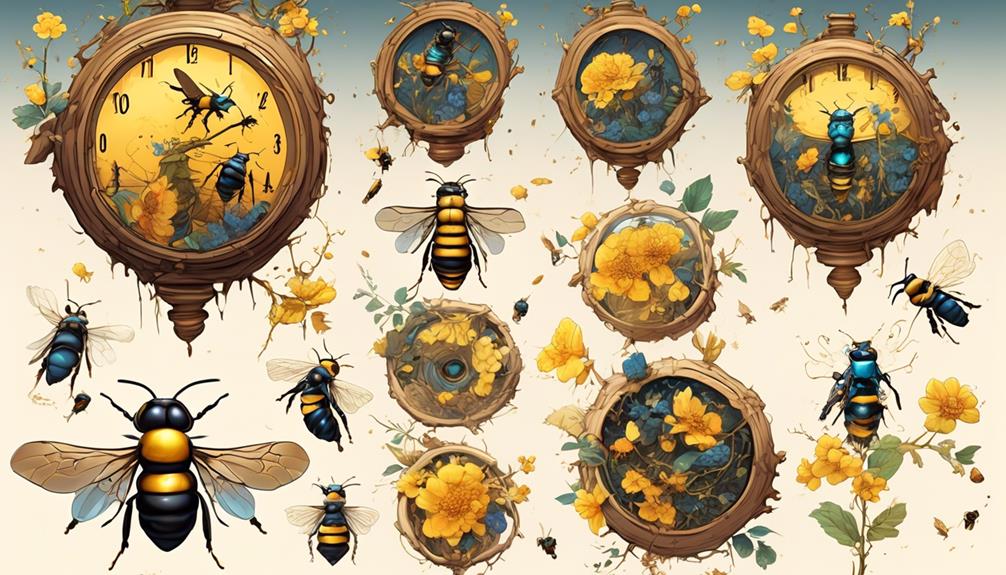
To understand the lifespan of a carpenter bee, it's essential to delve into the biology and lifestyle of this fascinating insect. Despite their intimidating appearance, carpenter bees are solitary insects. You mightn't know it, but these bees can live up to three years, a relatively long lifespan for a bee.
The life cycle of a carpenter bee starts as an egg, which develops into a larva, then a pupa, and finally an adult. The female carpenter bee lays her eggs in a series of tunnels she's bored into wood. These tunnels, or galleries, are where the larvae grow and metamorphose into adults.
The process isn't quick, though. It takes about seven weeks from the time the eggs are laid until the adult bees emerge. The newly emerged adults then feed on nectar and pollen for a few weeks before hibernating for the winter.
In spring, you'll see the adult bees again. They're out of hibernation, ready to mate and start the cycle all over again. If you're lucky, you might even see one of these fascinating creatures in action.
Factors Affecting Carpenter Bee's Longevity
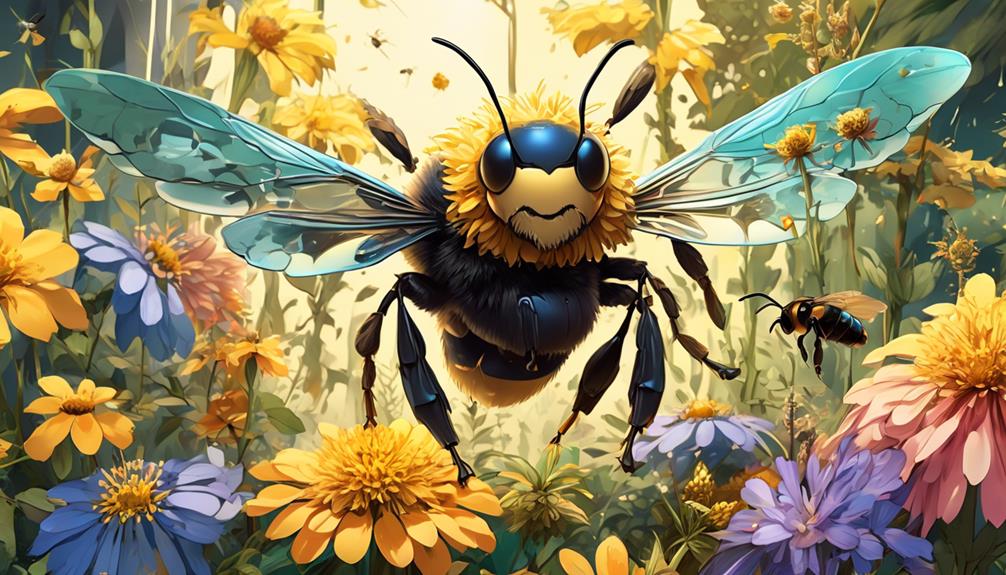
While the natural lifespan of a carpenter bee can extend up to three years, several factors can influence this, potentially shortening or prolonging their existence. Predators, parasites, environmental conditions, and availability of food sources are some aspects that can affect their longevity.
Predators like birds, spiders, and certain insects are major threats to carpenter bees. Parasites such as bee mites and certain fungi can also severely reduce their lifespan. Environmental conditions, including drastic temperature changes, can stress these bees, impacting their survival. The availability of food sources is another vital factor. Carpenter bees feed on nectar and pollen; a lack of flowering plants can limit their sustenance, affecting their lifespan.
Let's look at the following table to understand better:
Factors | Impact on Lifespan | Mitigation |
|---|---|---|
Predators | Decreases | Safe nesting areas |
Parasites | Decreases | Regular health checks |
Environment | Varies | Suitable climates |
Food Availability | Varies | Abundance of flowering plants |
Carpenter Bees: Predators and Threats
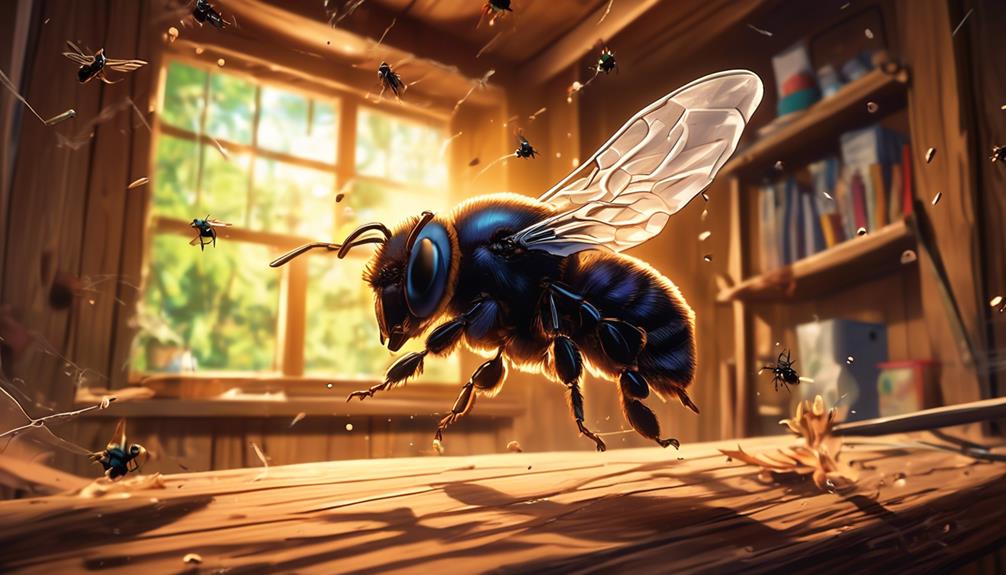
In the animal kingdom, numerous predators pose a significant threat to the survival of carpenter bees. You should be aware that birds, specifically woodpeckers, are the primary predators of these bees. These birds have a particular knack for locating carpenter bee nests. They drill into the wood, using their strong beaks to access and consume the bee larvae.
Other predators include certain species of wasps and flies. These insects infiltrate carpenter bee nests to lay their own eggs. When their larvae hatch, they consume the carpenter bee larvae. Additionally, spiders pose a threat, as they often capture adult bees in their webs.
You can't overlook the threats posed by parasitic insects either. They lay their eggs inside adult carpenter bees, and when their offspring hatch, they consume the host from the inside. This phenomenon, known as parasitism, significantly reduces the lifespan of carpenter bees.
Moreover, humans indirectly threaten carpenter bees by using pesticides and destroying their habitats. The use of toxic chemicals can kill these bees, while deforestation and urbanization limit their nesting sites. These human activities significantly impact the carpenter bee population, thereby threatening their existence.
Influence of Environment on Bee Lifespan
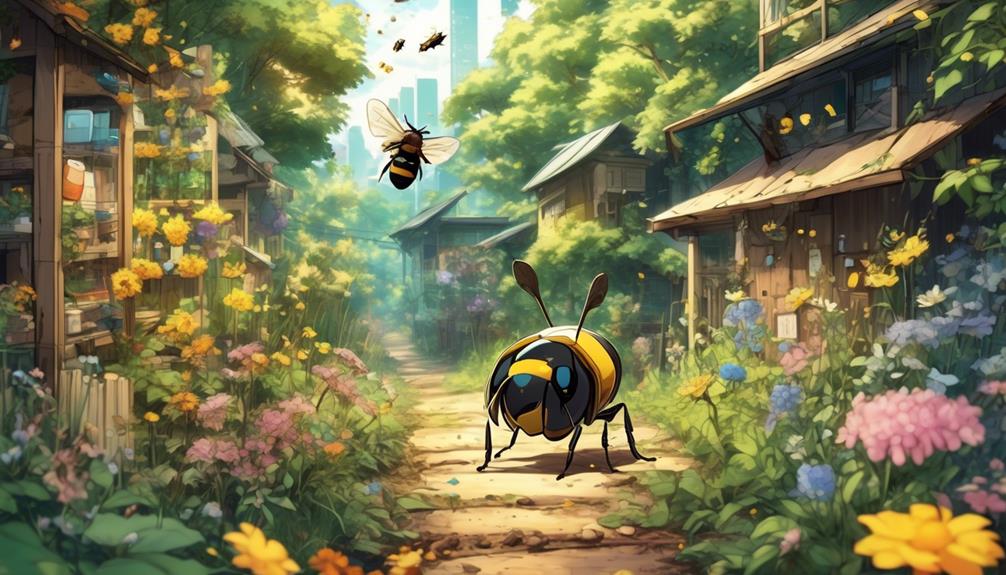
Your carpenter bee's lifespan can drastically be influenced by environmental factors such as climate, food availability, and habitat conditions. Let's delve deeper into how these factors play out.
Climate affects your bee's ability to survive. Cold climates can reduce their active periods, making it difficult for them to gather enough food and reproduce effectively. Hot climates, on the other hand, can cause dehydration if water sources are scarce.
Food availability directly impacts their health. If your bees have access to a diverse range of pollen and nectar, they're likely to live longer. On the contrary, limited food sources can lead to malnutrition, weakening their immune system and shortening their lifespan.
Lastly, habitat conditions matter. Your bees need safe, undisturbed spaces to nest. Disturbances or destruction of their habitats may cause stress, disease, and even premature death.
Here's a quick summary:
Environmental Factor | Negative Impact | Solution |
|---|---|---|
Climate | Too cold or hot affects survival | Maintain moderate temperatures |
Food Availability | Lack leads to malnutrition | Ensure diverse food sources |
Habitat Conditions | Disturbances cause stress | Provide safe, undisturbed spaces |
Human Interaction and Carpenter Bee Survival
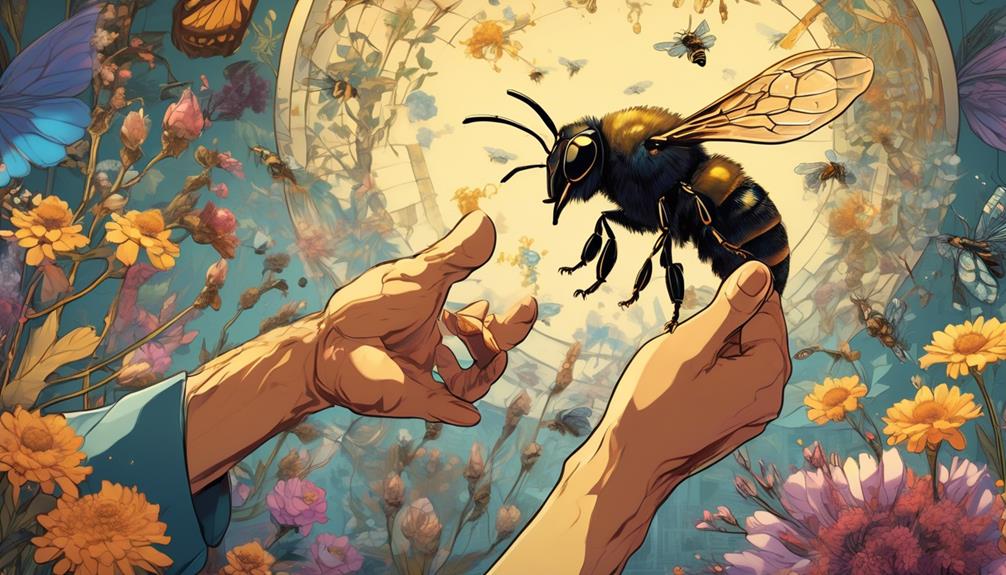
Beyond the influence of natural surroundings, the survival and life expectancy of carpenter bees are also significantly impacted by human interactions. You might be unintentionally affecting these bee populations. Let's delve into how and why.
Carpenter bees, like other pollinators, are crucial to the ecosystem. Yet, anthropogenic activities often pose threats to their survival. The widespread use of pesticides, for instance, can contaminate the nectar and pollen they feed on, leading to decreased lifespan and reproductive capabilities. Similarly, urbanization destroys their natural habitats, causing population decline.
Your actions can also influence their survival positively. Planting native, flowering plants provides ample food sources, enhancing their survival rates. Reducing pesticide use or opting for organic gardening methods can decrease chemical exposure. Offering untreated, softwood structures for nesting can also help.
Moreover, you can contribute to their survival by spreading awareness about their importance and dispelling fears about their 'destructiveness.' Carpenter bees are solitary creatures and rarely cause significant damage to structures unless there's a large infestation.
Conclusion
In conclusion, a carpenter bee's lifespan hinges on multiple factors. Their longevity is largely influenced by predators, environmental conditions, and human interactions.
Vigilance against threats, adaptation to their surroundings, and coexistence with humans can significantly extend their lives. Understanding these factors is vital to ensuring the survival of these essential pollinators.
Remember, they're not just pests – they're crucial contributors to our ecosystem.

